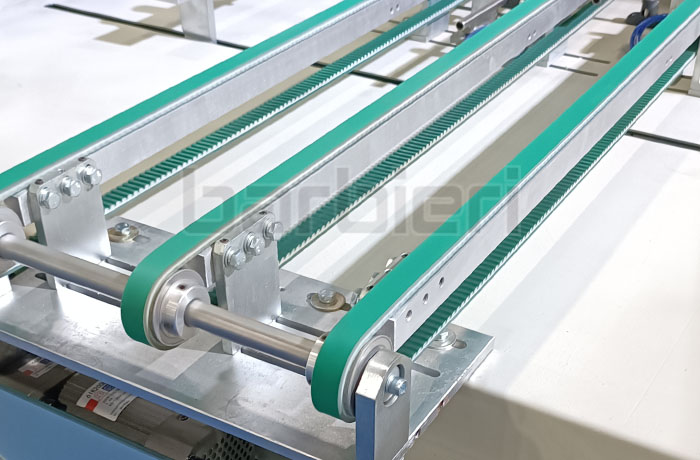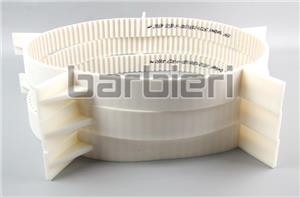Why do some timing pulleys have boss and some don't? The difference between timing pulley with boss and without boss
Timing pulley with boss (also called timing pulley with shoulder/or timing pulley with steps) usually have boss on the driving pulley, while those without boss is driven pulley. Timing pulley with boss is mainly used to improve transmission accuracy and enhance structural stability and durability.

In some cases, the advantages of designing driving pulley with boss :
1. Increase stability: The boss can increase the contact area between the driving pulley and the shaft or bearing, thereby improving the stability of the entire transmission system.
2. Prevent axial movement: The boss can help fix the position of the driving pulley and prevent it from axial movement during operation.
3. Improve durability: By increasing the contact area and providing better support, the boss can extend the service life of the driving pulley.
In some cases, the driving pulley may not need a boss:
1. Simplified design: In some lightweight or low-cost designs with strict requirements on weight and cost, the design without a boss can simplify the manufacturing process and reduce costs.
2. Specific application requirements: In some specific application scenarios, such as high-speed rotation or special environmental conditions, the design without a boss may be more suitable to meet specific performance requirements.

Application scenarios of shoulder timing pulley:
1. Occasions with very high transmission accuracy requirements: In this case, a shoulder timing pulley is required, because the timing pulley with a shoulder can be tightly fixed after installation, thereby avoiding transmission errors and vibrations, and ensuring the accuracy and stability of the transmission.
2. Occasions where the timing belt needs to be replaced frequently: Due to different working conditions or the limitation of equipment life, the timing belt needs to be replaced frequently. At this time, a timing pulley without a shoulder is required, because the timing pulley without a shoulder is easier to install.

The purpose of synchronous pulley with boss is to better secure the entire transmission system and ensure transmission accuracy, while synchronous pulleys without bosses are mainly for easy installation and replacement. Whether it is necessary to design a boss on the driving wheel or the driven wheel should be determined based on your actual application, performance requirements, and cost and weight considerations.
- Polyurethane Timing Belt
- Annular Timing Belt
- Open-end Timing Belts
- AT-series Timing Belts
- T-series Timing Belts
- STD-series Timing Belts
- HTD-series Timing Belts
- RPP-series Timing Belts
- TT5-series Timing Belts
- Imperial Series Timing Belt
- Supported Polyurethane Flat Belt Series
- Double Sided Timing Belt
- ATN-series Timing Belts
- Timing Belt With Backing
- Timing Belt With Fabric
- Timing Belt Punching
- Polyurethane Self-tracking Timing Belt
- Polyurethane Belt With Profile
- Special Processing Timing Belt




